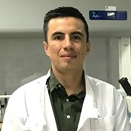Inorganics for Catalysts: Design, Synthesis and Applications
A special issue of Inorganics (ISSN 2304-6740). This special issue belongs to the section "Coordination Chemistry".
Deadline for manuscript submissions: closed (31 July 2023) | Viewed by 31302
Special Issue Editors
Interests: heterogeneous catalysis; waste management; materials science; process engineering
Interests: synthesis and characterization; catalysis; inorganic chemistry; nanotechonology
Special Issue Information
Dear Colleagues,
Advances in the catalytic processes over the last decades have enabled enormous progress in renewable energy production, environmental applications and sustainable development of several process. The heart of catalytic process is the design, synthesis and application of the catalyst. Their compositions, structures, functionalities, stability, resistance, activity, selectivity, durability, costs and environmental impact are the goal of the research for obtained a good material for optimal performance process. This call for scientists and professionals in the industry that working in the area of inorganic catalysts production and application that want to show their new results in this area allowing increase the knowledge towards the production of inorganic catalyst and use in different process.
Prof. Dr. Franz Edwin López Suárez
Prof. Dr. Robison Buitrago
Prof. Dr. Andres F. Suárez
Guest Editors
Manuscript Submission Information
Manuscripts should be submitted online at www.mdpi.com by registering and logging in to this website. Once you are registered, click here to go to the submission form. Manuscripts can be submitted until the deadline. All submissions that pass pre-check are peer-reviewed. Accepted papers will be published continuously in the journal (as soon as accepted) and will be listed together on the special issue website. Research articles, review articles as well as short communications are invited. For planned papers, a title and short abstract (about 100 words) can be sent to the Editorial Office for announcement on this website.
Submitted manuscripts should not have been published previously, nor be under consideration for publication elsewhere (except conference proceedings papers). All manuscripts are thoroughly refereed through a single-blind peer-review process. A guide for authors and other relevant information for submission of manuscripts is available on the Instructions for Authors page. Inorganics is an international peer-reviewed open access monthly journal published by MDPI.
Please visit the Instructions for Authors page before submitting a manuscript. The Article Processing Charge (APC) for publication in this open access journal is 2700 CHF (Swiss Francs). Submitted papers should be well formatted and use good English. Authors may use MDPI's English editing service prior to publication or during author revisions.
Keywords
- inorganic catalyst
- catalysts design
- engineering on catalyst
- sustainability in catalysts production
- novel catalytic materials
- operation reactor
- innovate preparation methods
- industrial application of inorganic catalysts
Benefits of Publishing in a Special Issue
- Ease of navigation: Grouping papers by topic helps scholars navigate broad scope journals more efficiently.
- Greater discoverability: Special Issues support the reach and impact of scientific research. Articles in Special Issues are more discoverable and cited more frequently.
- Expansion of research network: Special Issues facilitate connections among authors, fostering scientific collaborations.
- External promotion: Articles in Special Issues are often promoted through the journal's social media, increasing their visibility.
- e-Book format: Special Issues with more than 10 articles can be published as dedicated e-books, ensuring wide and rapid dissemination.
Further information on MDPI's Special Issue polices can be found here.







